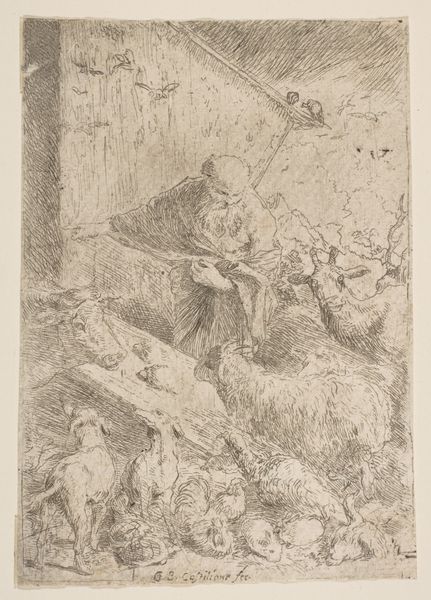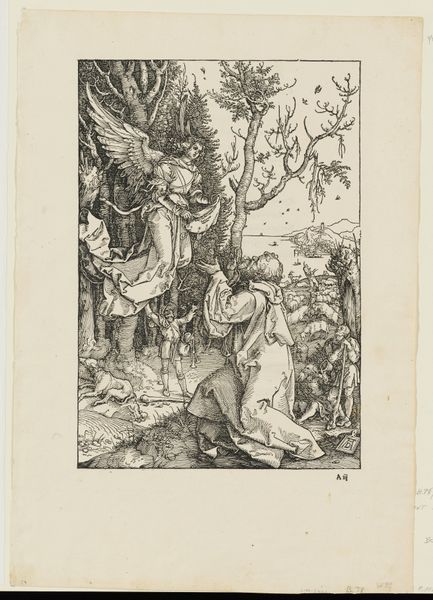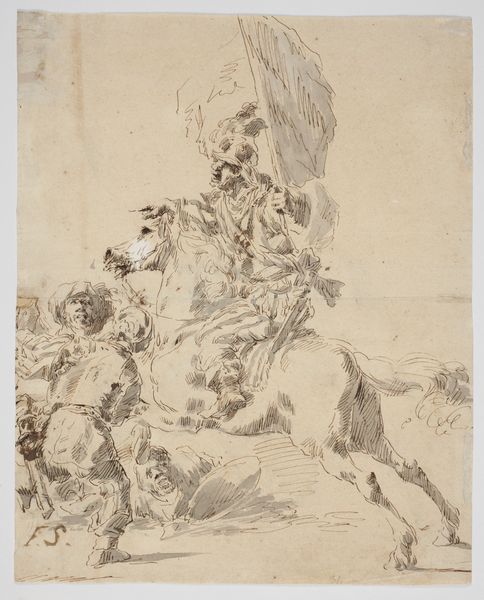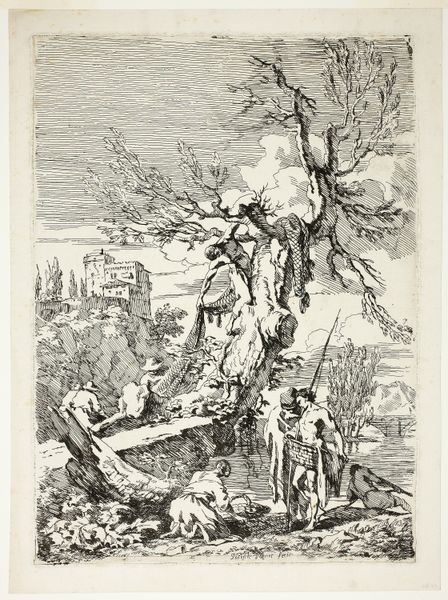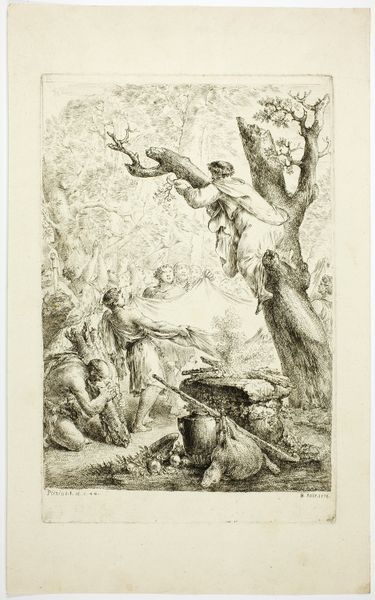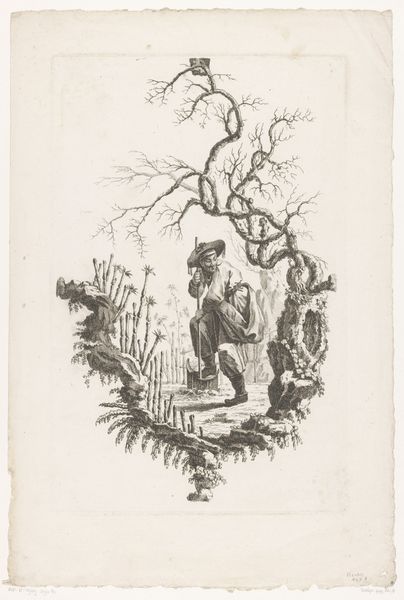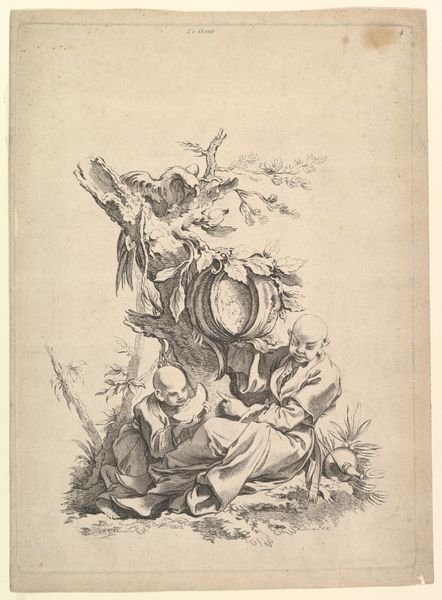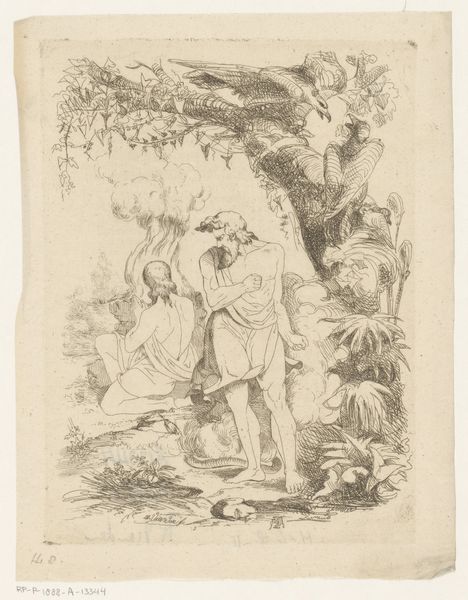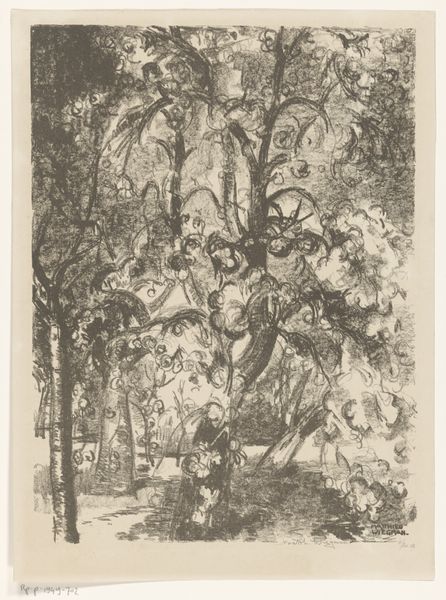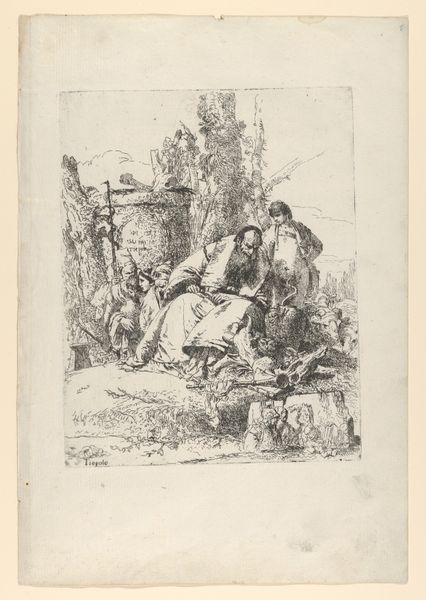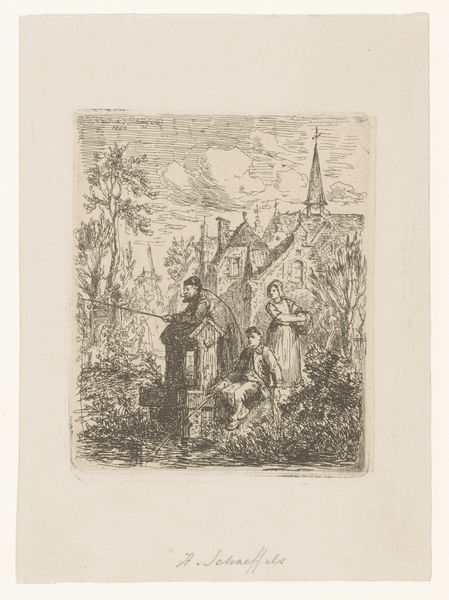
drawing, lithograph, print, etching, ink
#
drawing
#
narrative-art
#
lithograph
# print
#
etching
#
ink
#
genre-painting
Dimensions: height 445 mm, width 326 mm
Copyright: Rijks Museum: Open Domain
Editor: We're looking at "Omlijsting met een prentmaker" from 1862, an intricate print utilizing etching, lithography and ink, attributed to Girolamo Prepiani. The composition is arresting! It's asymmetrical, almost like a frame for something missing. What do you make of its complex organization? Curator: Its structure certainly dictates the reading. Note the artist's masterful use of line to define the various planes and textures. Observe how the figures are positioned within the created space: the engraver and muse at the upper reaches, children clustered near the bottom, the lone figure, shrouded by the umbrella, seemingly grounding the ethereal composition. Do you discern any spatial logic? Editor: It's as if different narrative vignettes are stacked, connected by symbolic elements. There are children at work and play. Also adults collaborating in their craft. What about the use of light and shadow here? Curator: Precisely. Note how Prepiani employs chiaroscuro to emphasize certain areas and create depth. The strategic placement of shadow draws the eye towards specific actions, and defines relationships. Is this use of shadow telling a deeper meaning in itself? Editor: It feels less like a unified narrative and more like a collection of thoughts about the artistic process. It certainly plays on dichotomies. Curator: An astute observation! Notice also the meticulous detail rendered in the tools of the artist contrasted against the more loosely defined figures. Prepiani’s technical skill is evident in this contrast, a duality highlighting art as process and end product. What interpretive possibilities might be teased from this relationship? Editor: It makes me consider artmaking itself: its technical and imaginative elements. Curator: Exactly! By carefully arranging lines, values, and shapes, the artist composes visual interest which suggests the layers and levels needed to create narrative art. The arrangement isn’t haphazard; instead, it is an active negotiation between different ideas! Editor: I never looked at prints in terms of composition. The conversation gave me a new language to read visual arts.
Comments
No comments
Be the first to comment and join the conversation on the ultimate creative platform.
